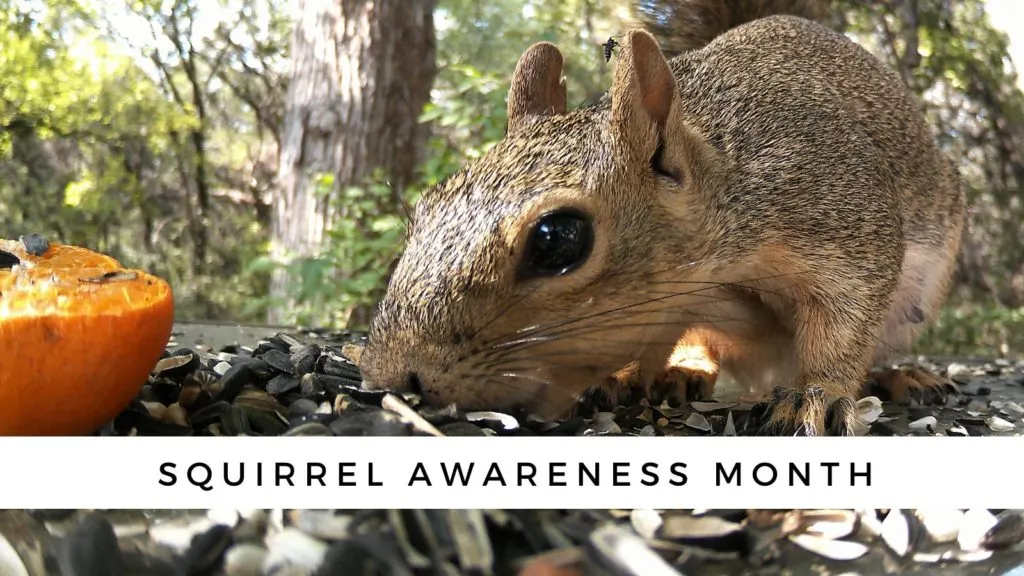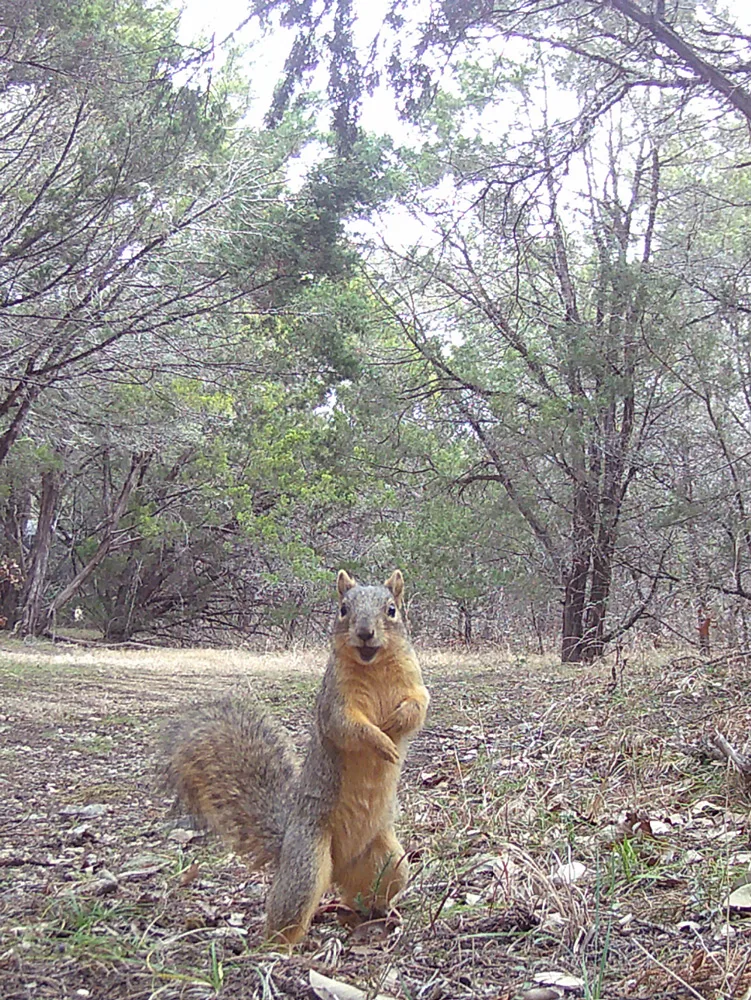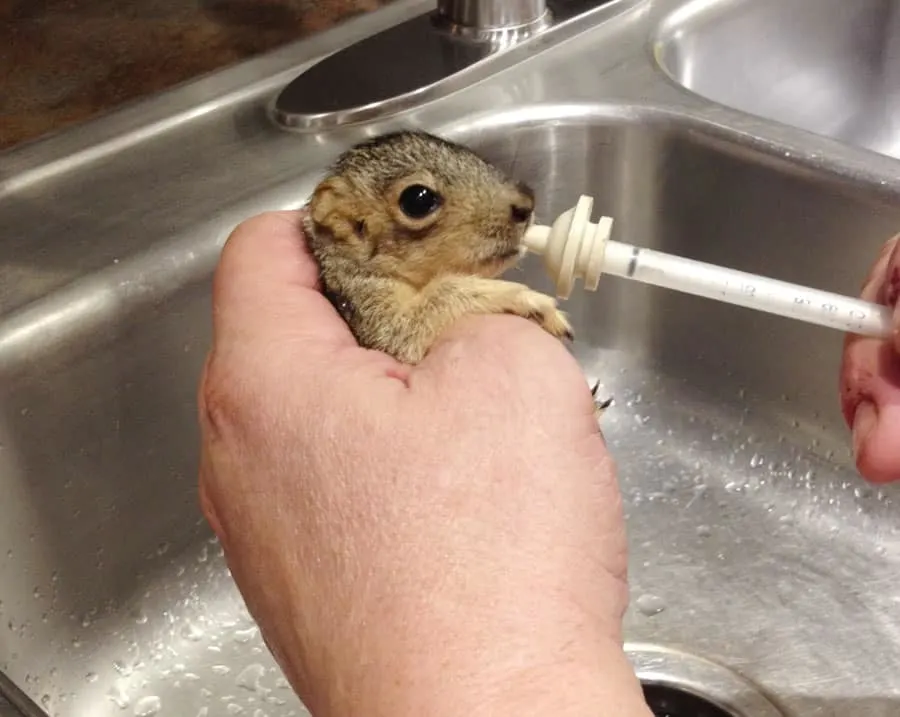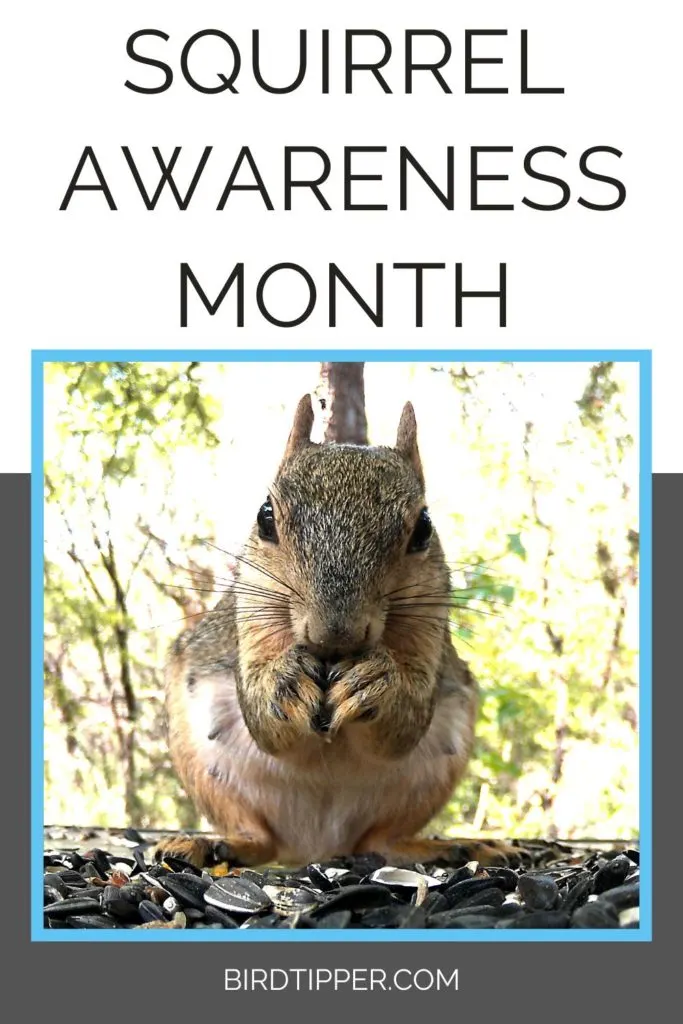No doubt you’ve looked out your window and seen a squirrel darting around your own backyard. Whether you are happy to see these energetic and entertaining creatures or frustrated because they’re literally eating into your birdseed budget, squirrels are important members of the ecosystem, helping to disperse seeds. Every year, these members of the rodent family are celebrated during Squirrel Awareness Month.

When is Squirrel Awareness Month?
Squirrel Awareness Month is observed every October. This wildlife holiday originated in 1995 and was created by the founder of the Squirrel Lover’s Club, Greg Bassett to help raise awareness of these often maligned animals.
You’ll also find Squirrel Appreciation Day every January 21. (You’ll find more bird and wildlife holidays on our Bird Holidays and Awareness Days Calendar.)
Why We Love Squirrels

Though they may be a nuisance to some, there are many reasons to appreciate squirrels. We love seeing them in our yard and watching the young squirrels scamper up and down the trees in play with their littermates.
Our primary bird feeding station is in our back yard, which the dogs don’t have access to. Our dogs do have access to our fenced front yard which has one feeder. Any time they’re outside, our dogs prevent squirrels from eating from the bird feeder in our front yard but the back yard bird feeders have stations just for the squirrels. These little guys never fail to put a smile on our face.
Here are just a few interesting facts about squirrels:
- Like other rodents, the squirrel’s front teeth are always growing–up to about 6 inches a year. It’s a good thing they wear down those chompers!
- The US is home to many types of squirrels–but typically their territories don’t overlap so you may primarily just see one type of squirrel in your backyard, depending on where you live.
- The gray squirrel is one of the most common types of squirrel that are native to North America–but there is more than one species of gray squirrel. It gets its name from its gray fur, which can sometimes have a rusty or reddish tinge. Depending on where you live, you may have Eastern Gray Squirrels, Western Gray Squirrels or Arizona Gray Squirrels.
- American Red Squirrels are, you guessed it, known for their reddish-brown fur. These are also one of the smaller types of squirrels, larger than chipmunks but much more petite than gray squirrels or fox squirrels.
- Fox Squirrels also get their name from their fur color; fox squirrels usually have reddish-brown or gray fur tipped with black. These are among the largest kinds of tree squirrels. Here in central Texas, we have Fox Squirrels–so many of the squirrel photos here on BirdTipper are fox squirrels!
- Flying Squirrels can actually glide through the air! This is because they have a membrane stretched between their front and back legs that acts like a mini parachute when they jump from high up. Flying squirrels are small; unlike other squirrels, Flying Squirrels are nocturnal so they’re not often seen. Here’s some really interesting trivia from Texas Parks & Wildlife magazine about Flying Squirrels: “Researchers recently discovered that under an ultraviolet light, this curious creature glows brilliant pink, one of the few mammals known to fluoresce (opossums are another). The reason for this feature is still unknown.”
- Ground Squirrels live on the ground, unlike most other squirrels. Related to chipmunks, marmots and prairie dogs, ground squirrels are omnivorous. Besides your birdseed, they’ll happily eat mice, insects, fruits and fungi.

Preventing the Squirrels from Taking Over Your Bird Feeder
Despite their many positive qualities, we know that squirrels can be a real headache for bird lovers. These pesky critters are known for raiding bird feeders and eating all the food!
Fortunately, there are a few things birders can do to deter squirrels without harming them:
- Invest in a squirrel-proof bird feeder. Many commercial models are available which make it difficult for squirrels to access the food inside.
- Offer alternative foods to the squirrels. Place trays of corn or peanuts on the ground away from your feeders. The squirrels will be happy to munch on these treats instead of raiding your feeders!
- Use physical barriers. Place your feeders atop or hanging from tall metal poles or hang them from trees using fishing line or metal pulleys to provide distance from the trees. Specially-designed baffles will also prevent squirrels from scaling poles. Locate the pole about 10 feet away from trees and decks so squirrels can’t jump on the feeder.
- Appreciate them from afar. Yes, they can be nuisances, but they’re still cute little creatures worthy of our admiration! Sit back and enjoy watching them frolic about in your yard. You might be surprised at how entertaining they can be!
Take some time this Squirrel Awareness Month to get to know these furry little creatures a bit better. Who knows, you might just develop a whole new appreciation for them!
Pin it to Remember Squirrel Awareness Month

- Can Grackles Be Dangerous to Your Dog? - October 13, 2022
- Can Hummingbirds Predict Hurricanes? - October 1, 2022
- How to Make Eggshell Calcium for Birds - September 25, 2022
